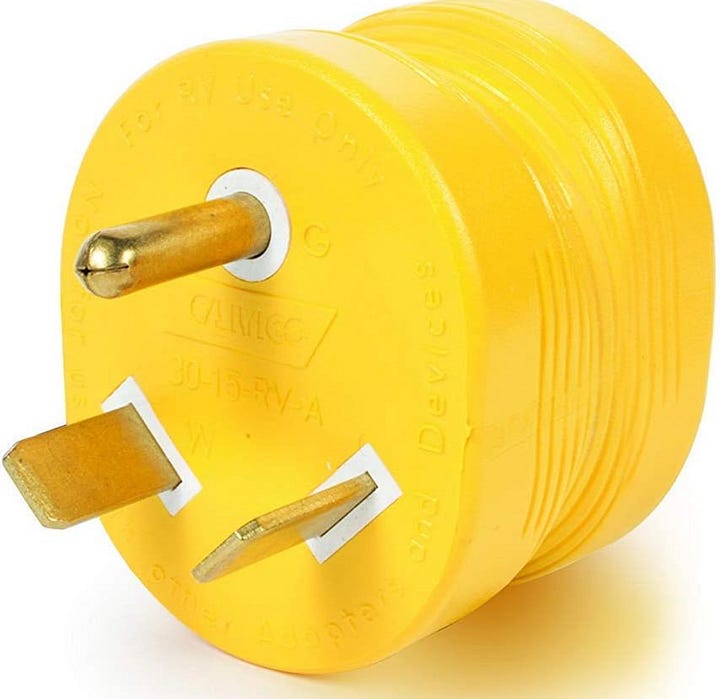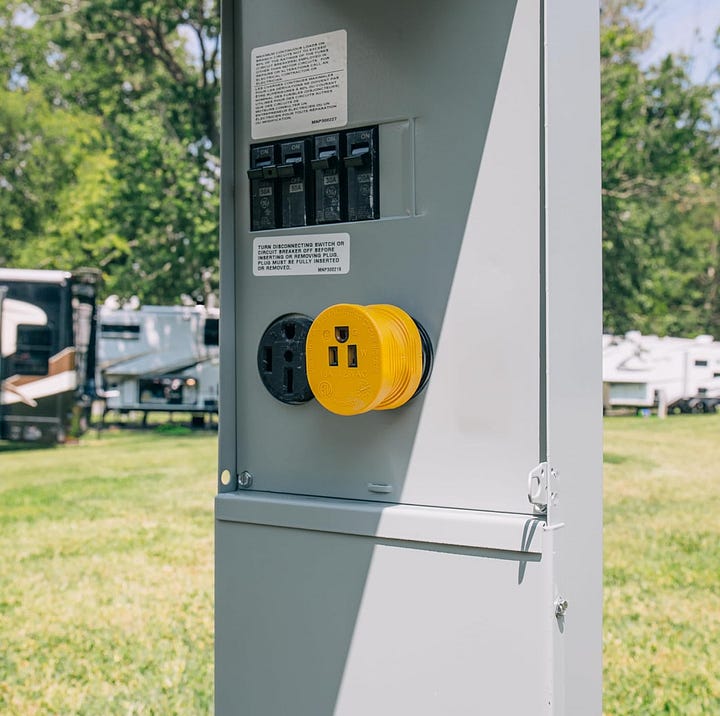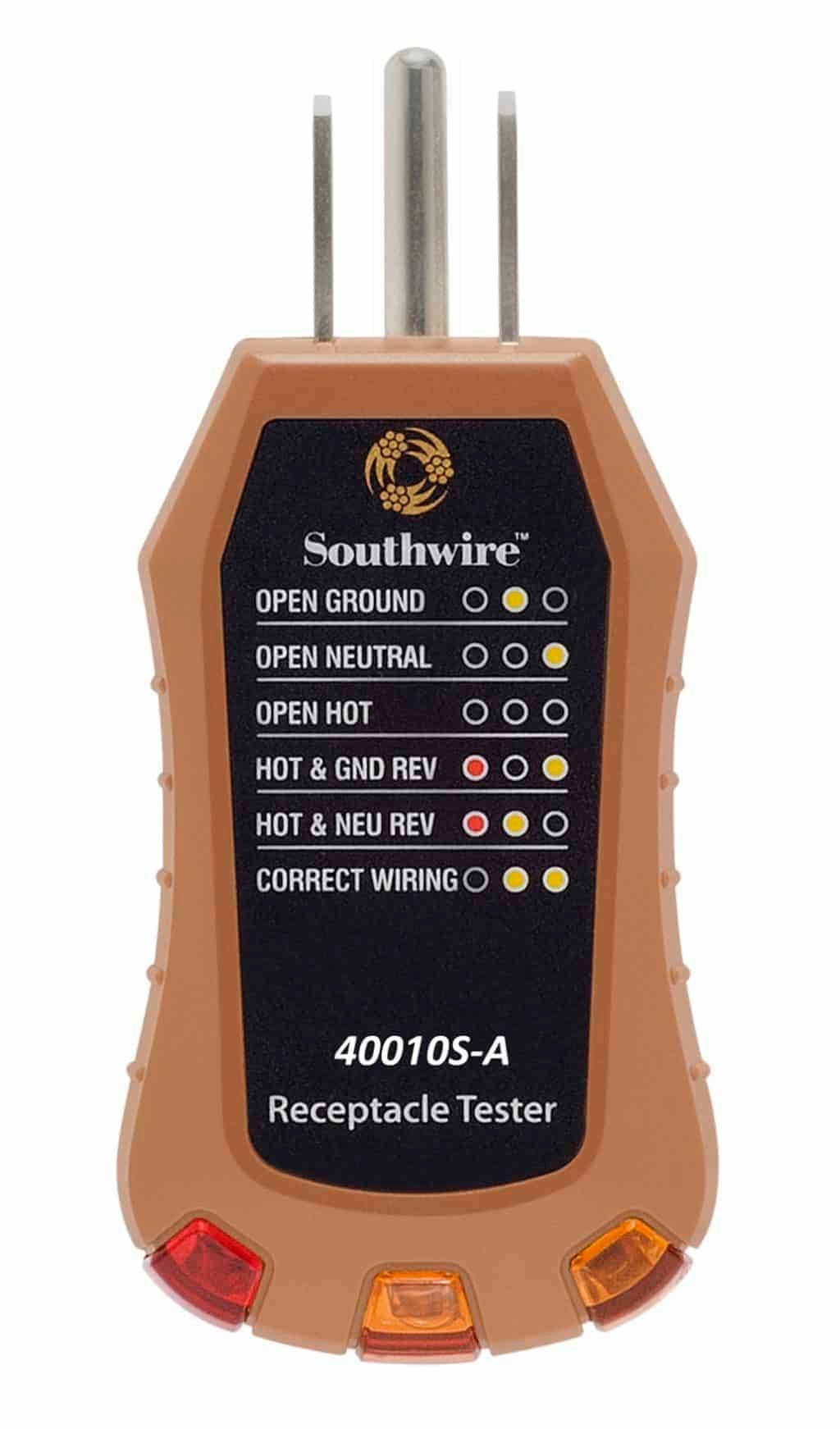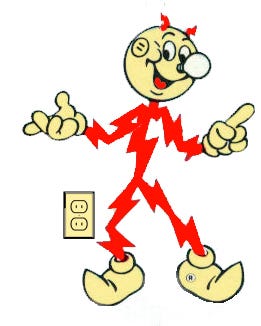Dear Mike,
I recently purchased a 3-light outlet tester like you talk about in your newsletter, but I wonder what the lights actually mean. Can I use a 30-amp to 15-amp adapter for measuring my pedestal outlet? And how do I know if an outlet is safe to plug into? I’m a newbie so I have lots of questions. —Befuddled in Brooklyn
Dear Befuddled,
Well, I sometimes forget just how confusing this all can be, so thanks for reminding me to write about this topic. I won’t get into ALL the troubleshooting variables here, but let’s cover the basics as they relate to electrical safety.


First of all, yes, you can use a 30-amp to 15-amp adapter for this test. That’s because the RV pedestal TT-30 outlet contact orientation is identical to the 15-amp Edison outlet except that it’s rated for 30 amps of current rather than the 15 or 20 amperes of a home outlet.
Be aware that residential outlet testers are designed to be plugged into an outlet installed with the ground contact oriented on the bottom, while pedestal outlets have the ground contact oriented at the top. So the light pattern will be reversed left to right with the red bulb on the right side rather than the left as shown in the diagram.
That’s why a dedicated surge protector for a 30-amp TT-30 outlet would be a better unit for this test. But the light patterns are pretty much the same as the 15-amp versions. More on that in a future article.
The humble 3-light outlet tester
To proceed you’ll need to get yourself a standard 3-light outlet tester that you can use in any home outlet. Here are a couple from Southwire. You really don’t need the GFCI version for 30-amp outlets unless you want it for 15- or 20-amp outlet testing since 30-amp pedestals don’t require a GFCI by code. But it won’t hurt anything so go ahead and spend the extra $5 or so on a GFCI testing version.
As easy as 1, 2, 3…
You’ll see that there are three lights on the end of the outlet tester: two amber and one red. The pattern of the lights is key to understanding if the outlet is safe, but you really don’t have to know everything that’s going on inside to make a judgment. You just look for a pattern of two amber lights and no red light. When you see that you can assume that the Hot, Neutral and Ground wires are hooked up in the right places.
But if you’re curious, here’s what the other patterns mean:
Open Ground: The outlet has no ground connection, which can easily allow your RV or electrical appliance to develop a hot-skin voltage. DO NOT plug your RV into this outlet.
Open Neutral: This means that you have no operational appliances, however, they’re actually energized with 120 volts and can be dangerous if you open up an access panel and poke around inside while the appliance is plugged in. Never assume anything is electrically safe to work on unless it’s unplugged.
Open Hot: This means you have no power in the outlet at all, likely from a circuit breaker being tripped or turned off.
Reversed Hot and Ground: Even though your appliances won’t operate, their chassis will be energized with 120 volts, which is extremely dangerous. DO NOT plug into this outlet. EVER!
Reversed Hot and Neutral: Unless something else is miswired, this in not immediately dangerous and won’t cause a hot-skin condition by itself. Use with extreme caution.
Correct Wiring: This means the outlet is safe unless you have a pretty rare miswiring condition I’ve named an RPBG (Reverse Polarity Bootleg Ground), in which case everything will operate normally but there will also be a hot-skin voltage. Read all about RPBG miswiring HERE.
That’s why I suggest you also use a Non-Contact Voltage Tester to confirm there’s no hot-skin voltage on your RV after plugging in.
Let’s play safe out there… Mike












Hi Mike. I used an Ideal tester through part of my career. With the Ideal, correct wiring would be the outside lights lit. I’ve subsequently purchased other brands that had different light configurations as well. In the end I reference the example on the side of the tester as opposed to memorizing the configuration. Thanks for showing the Southwire examples. Thanks for helping all of us to better understand electricity and RV’s.
Red-i-Kilowatt! Haven't seen him in years! Thanks for the knowledge AND the smile!